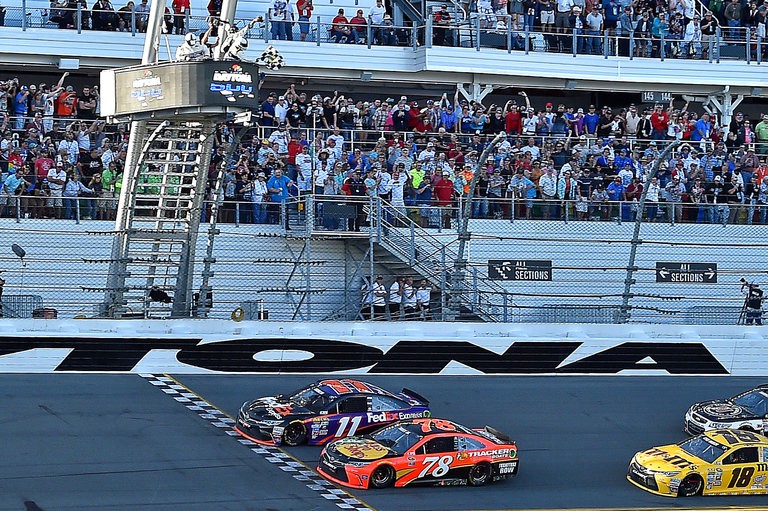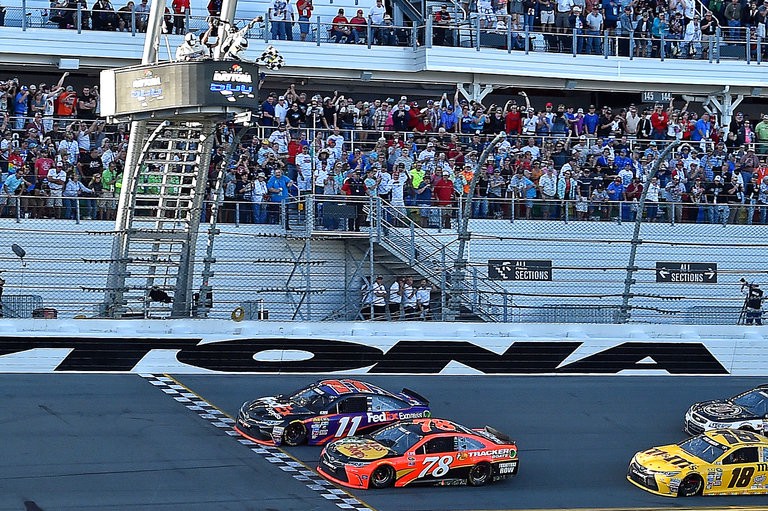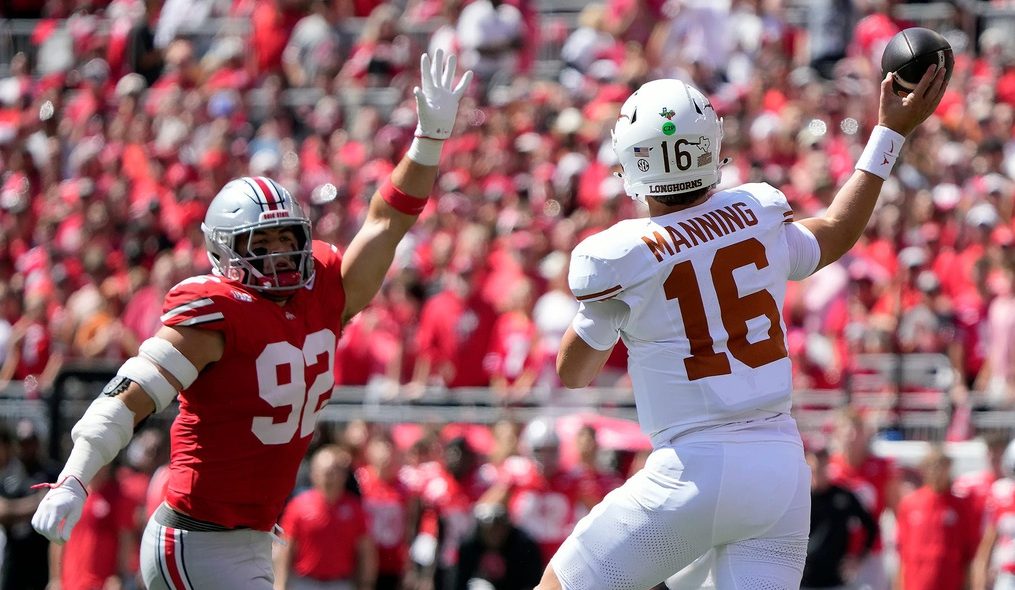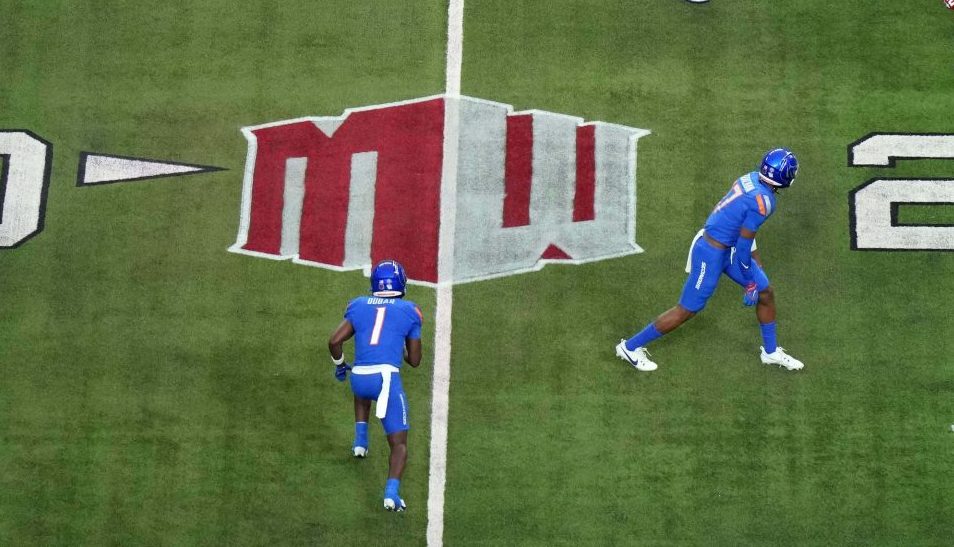
Questions remain, but NASCAR fans now know one thing: the sanctioning body announced significant changes to its race and playoff format for all of its national series for the upcoming season.
The announcement, which featured several key personnel in NASCAR, including team presidents and current and former drivers took place in Concord, North Carolina.
2012 Monster Energy NASCAR Cup Series Champion Brad Keselowski was highly in favor of the changes and attempted to calm the nerves of anxious fans, stating, “…please trust us. When you see this on the racetrack, this is going to be the best racing you’ve ever seen.”
Segments
Yes, NASCAR is transitioning segment races. Each race will be divided into three segments. The first and second stages will make up roughly half of the race distance and vary depending on track size and race length. The first two segments can end under caution and overtime rules do not apply.
Want more great content like this? Be sure to subscribe to our newsletter!
The third segment will cover the final half of the race and the winner will be crowned the overall race winner, compared to the winners of the first two segments being known as just that, segment winners. Regular overtime rules apply for the third session.
Now, what about rain? A rain-shortened race will be declared official if the second stage has been completed.
Points
Let’s face it, however simple math may seem, it’s not always simple. Points can be confusing, so here’s a look at how NASCAR plans to distribute points this season.
For the first two stages, the winning driver will be awarded 10 points, with second place receiving nine, third place eight…and so forth to 10th place, which is awarded a single point.
Winners of the first two segments receive one point to carry into the playoffs, should they qualify.
“These are enhancements that the NASCAR fan has long sought, and the entire industry has worked hard to develop a better racing format for our fans.”
— Steve O’Donnell, NASCAR executive vice president and chief racing development officer
After the final segment, points are awarded to all competitors. The race winner will receive 40 points, second place 35, third 34 points, with the drivers who place 36th — 40th earning one point.
The race winner? They get five bonus points, which is a change from the two points awarded last year. Theoretically, if a driver wins all three segments, he (or she) would receive seven bonus points.
Gone are the days where points were awarded for leading a lap or the most laps.
Playoffs
Playoffs? Yes, ‘The Chase’ is a thing of the future. NASCAR’s postseason is now known simply as the playoffs.
How will they work? The overall format remains mostly unchanged. There are some rule changes, however.
The points leader at the end of 26 races, which is the final race before the playoffs, will be crowned the regular season champion and awarded 15 bonus points plus points for any segment or race wins.
Second place in the regular season standings earns 10 points and third place eight, with the 10th place finisher receiving one point.
Sixteen drivers will make the playoffs, which remains unchanged from the 2016 season. At the start of the final 10 races, all playoff competitor’s points will be reset to 2,000, but a driver’s bonus points will be added on to that total.
In the playoffs, the win and advance philosophy still applies, just like a win in one of the first 26 races guarantees a playoff berth provided the driver is in the top-30 in points. As written on NASCAR.com, “Winning trumps all.”
A driver can earn additional bonus points during the playoffs, which carry over to each round. The rounds remain the same as the past years, with there being four rounds and four drivers eliminated each prior to the finale Homestead.
Before Homestead, the top four drivers will have their points reset and compete for a championship in a one race shootout. No bonus points are handed out during the final race. The first championship contender to take the checkered flag wins the trophy.
Changes Happen…
Sure, not all fans will like it, but NASCAR had to make changes. Steve O’Donnell, NASCAR executive vice president and chief racing development officer stated, “These are enhancements that the NASCAR fan has long sought, and the entire industry has worked hard to develop a better racing format for our fans.”
NASCAR followed suit of major sports like the MLB and NFL, which tweaked various rules and events in an effort to keep up with a changing industry. Perhaps this change was geared toward the new fan and making the racing more exciting, but multiple drivers stated the new format caters to the old school fan.
Ultimately, it matters most what the fan thinks. What are your thoughts? Tweet me @Kraig_Doremus with comments or questions.

















